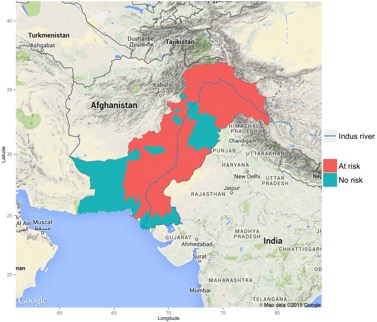In this post, Avit Kumar Bhowmik talks about their recent paper “Mapping human health risks from exposure to trace metal contamination of drinking water sources in Pakistan”.

Predicted areas at risk from mercury (Hg) contamination of surface water resources in Pakistan (Bhowmik et al. 2015; Science of The Total Environment)
Contaminants are globally one of the major reasons of freshwater degradation and ecotoxication. Severe consequences of contaminants have already been observed for ecological and human health. Although in developing countries freshwater contamination is more acute than other regions because of rapid and uncontrolled industrialization and application of pesticides and chemical fertilizers, nationwide human health risk assessments are lacking since water quality monitoring activities have been limited to a few administrative areas. Thus, the first nationwide human health risk maps have been computed by predicting the concentration of 10 trace metals in the surface and ground water sources of Pakistan and comparing them to guideline values. Geographically weighted regression models were used to incorporate local variations of trace metals and thus to mitigate effects of large distances among samples due to data scarcity. They have managed to achieve high accuracy and low uncertainty in model predictions, where predicted concentrations were in good agreement with observed concentrations.
Model predictions depicted that in more than 53% of the total area of Pakistan, the freshwater resources are at risk from contamination by arsenic, chromium, iron, nickel and lead. The area with predicted elevated risks is inhabited by more than 74 million people. These results are highly relevant for disease mitigation and water resources management to identify potential hot spots.
The paper was authored by Avit Kumar Bhowmik and Junior Professor Ralf B. Schäfer from Quantitative Landscape Ecology working group in collaboration with colleagues from institutions across the globe. It has been published in Science of The Total Environment and can be accessed from the authors’ researchgate pages.

